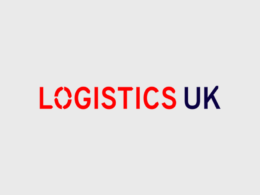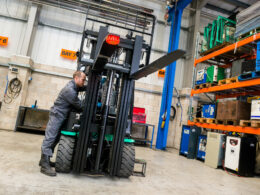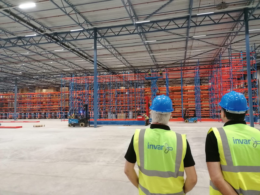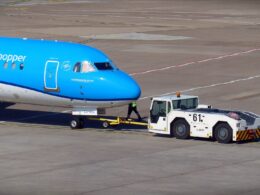by Alex Buckley, General Manager of EMEA & APAC operations at DispatchTrack.
Electric vehicles are going to be a huge part of the drive towards sustainable logistics in the coming years—but right now, there is simply not enough of them to go around.
Amazon, for instance, has had some well-documented challenges around this issue. Earlier this year, they gained the exclusive rights to Rivian’s commercial electric vans for the next four years—and even with that deal, they have not been able to get vans onto the streets as quickly as they would like for meeting their carbon neutrality goals. For businesses that do not have Amazon’s purchasing power (read: virtually everyone else), supply is likely to lag behind demand for a while yet.
So, what are delivery organisations supposed to do to bridge the gap in the meantime? You can start with a hybrid approach that focuses on both electrification and cutting emissions via delivery route optimisation.
Challenges in Fleet Electrification
Ultimately, electrification is going to be one of the most powerful ways you can cut greenhouse emissions. And it is already having an impact in the UK. DPD, for instance, is now successfully running entirely electric fleets around 10 different UK cities and towns.
But because the market for commercial electric vehicles is so much less mature than the market for consumers, there remain a lot of unknowns. Not only is it difficult to predict when there will be enough supply to satisfy the market, there are also concerns about functionality with the existing technology.
For instance, there have been some questions about how well electric vans will function in cold weather. In particular, when carrying the heavy loads that typically come with last mile deliveries, cold temperatures can significantly impact fleet range. Even on the consumer side, Tesla has acknowledged the cold can slow down charging.
None of this is to suggest that this technology will not be transformative—it absolutely will. But it is also not yet a panacea when it comes to taking control of your carbon emissions. For most fleets right now, the short-term challenges are going to be a matter of balancing electrification with other approaches to decreasing emissions.
How a Hybrid Approach Can Help
In order to power a hybrid approach to going green, you are going to have to focus on a few different methods of boosting sustainability.
First, you will want to focus on finding ways to drive fewer miles. Anyone who has ever planned a delivery route can tell you that this is easier said than done. At the same time, the fact that the last mile is fundamentally inefficient means that most organisations actually have a lot of room to decrease miles driven. This can be accomplished through route optimisation, a process that’s designed to find the shortest delivery routes, but it can also be impacted by reducing missed and failed deliveries.
Whenever a customer is not at home to accept delivery when the driver arrives, you are stuck making a redelivery attempt and essentially doubling your number of miles driven—your CO2 emissions—for that stop. If you can increase your first attempt delivery success rate by keeping your customers informed about their ETAs and then actually delivering at the right time, you can drive fewer miles and decrease your emissions even further.
Even if your fleet is fully electrified, there is still no magical solution for the problem of wastage and inefficiency. When you cannot effectively track every item and every delivery, your inventory footprint (the other large contributor to carbon emissions in delivery management) tends to increase, resulting in greater CO2 emissions from heating and cooling warehouse spaces. Only when you have real visibility into all of your deliveries on a granular level in real time can you address some of the root causes of carbon emissions in the supply chain that go beyond fuel consumption on the road.
Reducing Carbon Emissions with Smarter Delivery Management
The hybrid approach described above requires a strong technological foundation that leverages AI and SaaS technology to offer you fast, sophisticated, and connected delivery management functionality. This might include a few different things:
- AI-powered route optimisation, empowering you to drive fewer miles with more efficient routes and decrease failed deliveries by consistently arriving at the promised time.
- Two-way customer communications to keep customers informed at every stage of the delivery process and further reduce the risk of carbon-intensive failed deliveries.
- Real-time delivery visibility that can help you drive fewer miles through smarter exception management and reduce your inventory footprint through better traceability.
Ultimately, these best practices require you to find the right technology to take control of your deliveries from end to end. As you work towards electrifying your fleet or implementing other green logistics programmes, having a strong technology bedrock that provides visibility and agility will only make your carbon reduction efforts more effective. For more information, please visit www.dispatchtrack.com.













